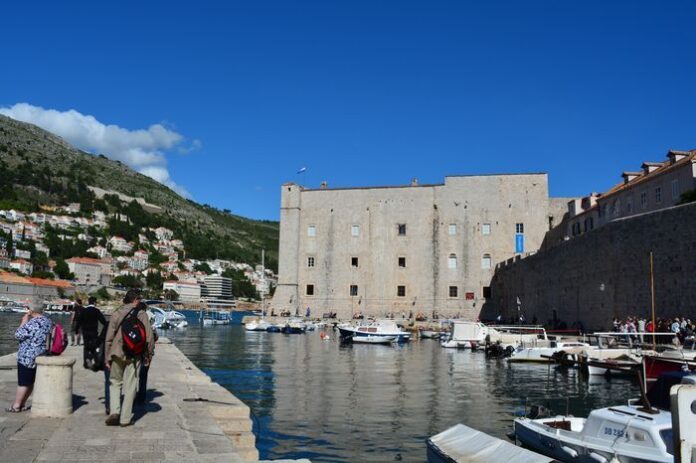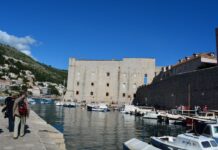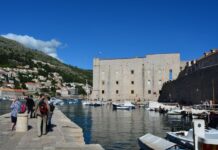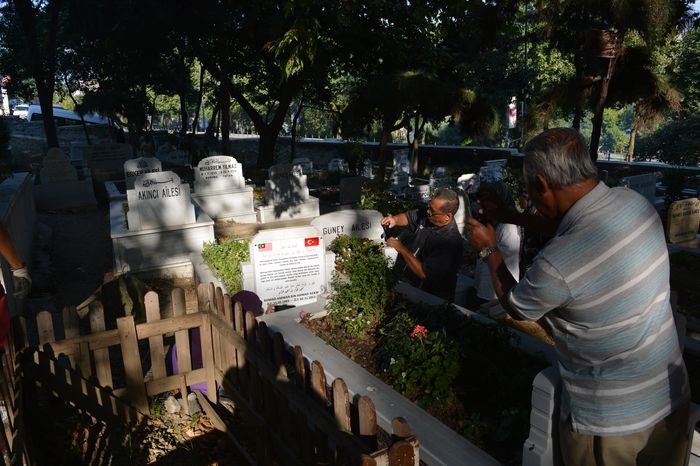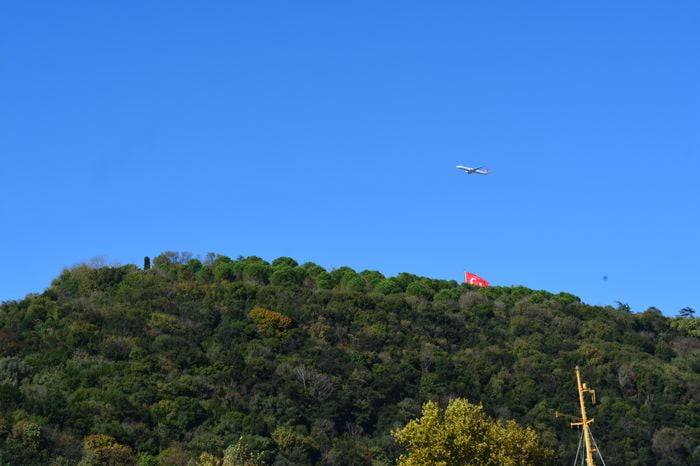Identifying the Gate of the Red Faction (Porta Rhousiou)
The identification of this gate with the name of the Red Faction—Porta Rhousiou—is supported by two important facts. First, no other gate in the Theodosian Walls is associated with this name, so this entrance is the most likely candidate. Second, two features connected to the gate support the idea that it was linked with the Red Faction, one of the famous political and sports groups (factions) in Byzantine Constantinople Sofia Sightseeing.
Red-Colored Stone and a Clue in the Inscription
The first clue is that the seven stone shafts used to form the lintel, posts, and sill of the gate are all painted with red wash, possibly as a way of marking the gate with the color of the Reds.
The second clue is an old Greek inscription on the northern face of the southern gate tower. Though the inscription is damaged, the surviving part reads:
“The Fortune of Constantine, our God-protected Emperor, triumphs”
In Greek:
ΝΙΚΑ Ἡ ΤΥΧΗ ΚΩΝΣΤΑΝΤΙΝΟΥ ΤΟΥ ΘΕΟΦΥΛΑΚΤΟΥ ἩΜΩΝ ΔΕΣΠΟΤΟΥ
Historians believe that the missing final words were likely:
“KAI ΡΟΥΣΙΩΝ”, meaning “and of the Reds”.
This phrase would make sense in the context of inscriptions made by the factions, who often celebrated their role in constructing or supporting public buildings.
Inscriptions and Historical Details
This gate is unique for the large number of inscriptions found on and around it:
Five inscriptions are found on the gate itself.
Two more are on the southern gate tower.
Among these, the most important are the inscriptions that:
Commemorate the construction of the Theodosian Walls in 447, a major engineering effort after an earthquake damaged the older walls.
Record repairs made to the Outer Wall during the reign of Emperor Justin II and Empress Sophia.
Another inscription, though partly erased, is still visible on the southern side of the gate.
A fifth inscription, too damaged to understand fully, is placed above a niche, likely used to display icons. It was common for city gates to be placed under the protection of a heavenly guardian or saint.
The gate was also fitted with a portcullis, a heavy vertical gate used for extra defense.
The Fourth Military Gate
Moving further north, the Fourth Military Gate was located between the ninth and tenth towers, just beyond the Porta Rhousiou. A notable feature of this gate is a corbel (a supporting stone ledge) on the outer gateway’s northern side. This stone has an inscription, showing it was taken from another building, which was originally constructed by a person named Georgius The Third Military Gate and Its Surroundings.
This entrance, likely the Porta Rhousiou, not only played a military role but also carried deep political and cultural symbolism. The use of red stone and references to the Red Faction reflect how important the city’s factions were in both entertainment and civic life. With its many inscriptions and defensive features like the portcullis, this gate stands out as one of the most historically rich entrances in the Theodosian Walls.
